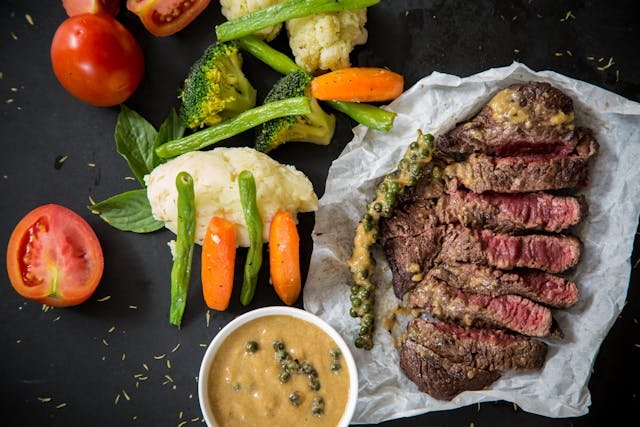Cooking is an art form that lets you express your creativity and provides nourishment for your body and spirit beyond simply being a mundane duty. Finding new methods to explore and invent with tastes can take your cooking experience to new levels, regardless of your level of expertise. Through experimentation with various products, methods, and recipes, you can turn your kitchen into a creative gourmet utopia.
Embracing Global Flavors: Infusing Diversity into Your Dishes
Investigating other tastes and cuisines is one of the most fascinating methods to unleash your creativity in the kitchen. Every part of the globe has distinct cooking techniques, ingredients, and culinary customs that can enhance the flavor and complexity of your dishes. Embracing diverse cuisines brings you a world of possibilities for culinary experimentation, whether you’re exploring the robust flavors of Mexican food, the subtle nuances of Japanese cooking, or the fragrant spices of Indian cuisine. Trying out different international ingredients such as herbs, spices, sauces, and specialty products can expand your culinary skills. For instance, adding spices like cumin, garam masala, and turmeric can give meats or vegetarian foods a more lively taste. By experimenting with the umami-rich tastes of miso paste, soy sauce, and mirin, you can add a bit of Japanese flare to basic stir-fries or noodle meals. Through the incorporation of these varied ingredients into your cuisine, you can produce meals that entice the palate and take your dining experience on a global journey.
Mastering Plant-Based Cooking: Elevating Your Meals with Tofu
Cooking with plants has become more and more popular due to its many health advantages as well as its adaptability and inventiveness. A staple of plant-based cuisine, tofu is manufactured from soybeans and provides an open canvas for creative cooking. This high-protein ingredient can be used to make a wide range of delectable recipes, such as creamy tofu desserts and crispy tofu stir-fries. Learning several cooking methods is essential if you want to use tofu to its most potential in your kitchen. Pressing tofu before cooking, for example, helps remove excess moisture, giving it a firmer texture that better absorbs marinades and sauces. When pan-frying or baking, slicing tofu into cubes or strips ensures uniform cooking and crispy exteriors. For a burst of flavor, try marinating tofu with tastes such as soy sauce, sesame oil, ginger, and garlic, or dive into a classic mapo tofu recipe, which pairs tofu with a spicy and savory sauce that exemplifies the richness of Sichuan cuisine.
Elevating Everyday Ingredients: Turning Ordinary into Extraordinary
In the kitchen, creativity frequently starts with common items that you can already have in your pantry. You can turn ordinary meals into spectacular culinary masterpieces by experimenting with combinations and reinventing basic mainstays. For instance, adding seasonal fruits to savory salads, such as citrus or berries, creates a welcome contrast of textures and tastes. Vegetables become the star of the dish when roasted and their natural sweetness is enhanced by drizzling them with honey or balsamic sauce, which also caramelizes their edges. Trying out new culinary techniques can also give well-known foods a fresh spin. Vegetables that are roasted at high temperatures get richer tastes and crisp, caramelized skins. Fruits such as pineapple or peaches that have been grilled bring out their natural sugars and provide a smokey dimension that goes well with savory foods or sweets. THE DEFINED DISH BLACK PEPPER CHICKEN
Exploring Fermentation: Harnessing the Power of Probiotics
Food can be preserved by fermentation, an age-old culinary method that also improves food’s taste and nutritional content. Fermented foods, which range from tart sauerkraut and kimchi to probiotic-rich kombucha and kefir, provide a plethora of health advantages and culinary creative potential. By adding fermentation to your culinary arsenal, you can enhance digestion and gut health while experimenting with various tastes, textures, and preparation methods. If you want to experiment with fermentation at home, start with easy dishes like pickles or sauerkraut that only need a few ingredients and minimum equipment. To make your sour sauerkraut, just combine cabbage, salt, and water; to make crisp homemade pickles combine cucumbers, vinegar, and spices. You can try more complicated ferments, such as kimchi, a staple of Korean cuisine prepared from fermented vegetables and hot ingredients, as you gain confidence and expertise. BISTRO MENIL AT HOME
Conclusion
In order to create unique eating experiences, being creative in the kitchen means experimenting with tastes, methods, and ingredients rather than merely following instructions. Now, get your hands dirty, sharpen your knives, and let your ingenuity and imagination lead the way as you set off on a voyage of culinary discovery and innovation.
Brit is a passionate writer with a love for storytelling and exploring the depth of human experience through words. With a keen eye for detail and a thoughtful voice, Brit crafts pieces that resonate with readers and spark meaningful reflection. When not writing, Brit enjoys quiet moments with a good book, long walks, and finding inspiration in everyday life.






